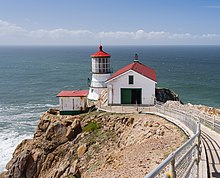
John Howard Carpenter is an American filmmaker, composer, and actor. Most commonly associated with horror, action, and science fiction films of the 1970s and 1980s, he is generally recognized as a master of the horror genre. At the 2019 Cannes Film Festival, the French Directors' Guild gave him the Golden Coach Award and lauded him as "a creative genius of raw, fantastic, and spectacular emotions".
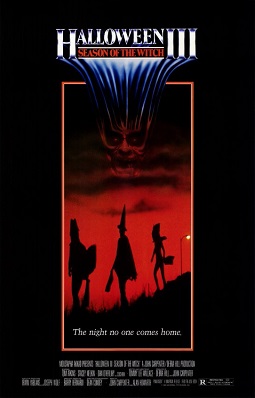
Halloween III: Season of the Witch is a 1982 American science fiction horror film and the third installment in the Halloween film series. It is the first film to be written and directed by Tommy Lee Wallace. John Carpenter and Debra Hill, the creators of Halloween and Halloween II, return as producers. Halloween III is the only entry in the series that does not feature the series antagonist, Michael Myers. After the film's disappointing reception and box office performance, Michael Myers was brought back six years later in Halloween 4: The Return of Michael Myers (1988).

Adrienne Jo Barbeau is an American actress and author. She came to prominence in the 1970s as Broadway's original Rizzo in the musical Grease, and as Carol Traynor, the divorced daughter of Maude Findlay on the sitcom Maude (1972–1978). In 1980, she began appearing in horror and science fiction films, including The Fog (1980), Escape from New York (1981), Creepshow (1982), and Swamp Thing (1982). She also provided the voice of Catwoman in the DC Animated Universe. In the 2000s, she appeared on the HBO series Carnivàle (2003–2005) as Ruthie.
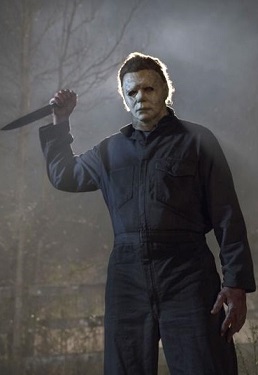
Michael Myers is a character from the slasher film series Halloween. He first appears in John Carpenter's Halloween (1978) as a young boy who murders his elder sister, Judith Myers. Fifteen years later, he returns home to Haddonfield, Illinois, to murder more teenagers. In the original Halloween, the adult Michael Myers, referred to as The Shape in the closing credits, was portrayed by Nick Castle for most of the film and substituted by Tony Moran in the final scene where Michael's face is revealed. The character was created by John Carpenter and has been featured in twelve films, as well as novels, video games, and comic books.
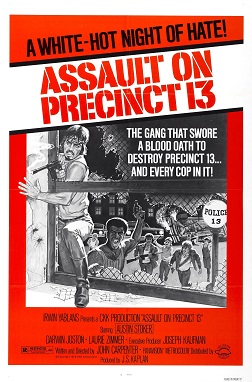
Assault on Precinct 13 is a 1976 American action thriller film written, directed, scored, and edited by John Carpenter. It features Austin Stoker as a police officer who defends a defunct precinct against a relentless criminal gang, and Darwin Joston as a death row-bound convict who assists him. Laurie Zimmer, Tony Burton, Martin West, and Nancy Kyes co-star as other defenders of the precinct.
Debra Hill was an American film producer and screenwriter, best known for her professional partnership with John Carpenter.
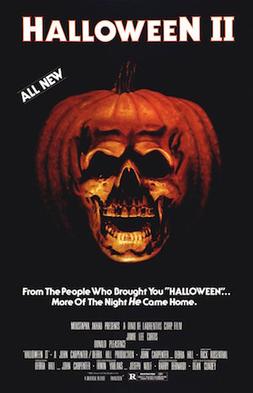
Halloween II is a 1981 American slasher film directed by Rick Rosenthal, in his directorial debut, written and produced by John Carpenter and Debra Hill, and starring Jamie Lee Curtis and Donald Pleasence, who reprise their respective roles as Laurie Strode and Dr. Sam Loomis. It is the second installment in the Halloween film series and is a continuation sequel to Halloween (1978). The plot picks up directly after the cliffhanger ending of the first film, with Michael Myers following survivor Laurie Strode to the local hospital, while his psychiatrist Dr. Loomis continues his pursuit of him.

Halloween 4: The Return of Michael Myers is a 1988 American slasher film directed by Dwight H. Little, written by Alan B. McElroy, and starring Donald Pleasence, Ellie Cornell, and Danielle Harris in her film debut. It is the fourth entry in the Halloween franchise and marks the return of Michael Myers, as the primary antagonist, after his absence in Halloween III: Season of the Witch (1982), a standalone film.

Christine is a 1983 American supernatural horror film co-scored and directed by John Carpenter and starring Keith Gordon, John Stockwell, Alexandra Paul, Robert Prosky and Harry Dean Stanton. The film also features supporting performances from Roberts Blossom and Kelly Preston.

Prom Night is a 1980 slasher film directed by Paul Lynch and written by William Gray. Jamie Lee Curtis and Leslie Nielsen star. The film's plot follows a group of high school seniors who are targeted at their prom by a masked killer, seeking vengeance for the accidental death of a young girl. The film features supporting performances from Casey Stevens, Eddie Benton, Mary Beth Rubens and Michael Tough.
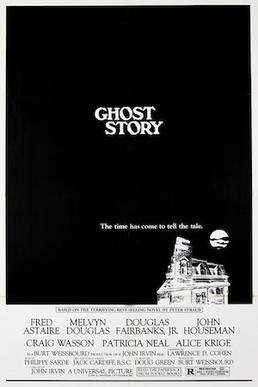
Ghost Story is a 1981 American supernatural horror film directed by John Irvin and starring Fred Astaire, Melvyn Douglas, Douglas Fairbanks Jr., John Houseman, Craig Wasson, and Alice Krige. Based on the 1979 novel of the same name by Peter Straub, it follows a group of elderly businessmen in New England who gather to recount their involvement in a woman's death decades prior when one of them suspects her ghost has been haunting him.

The Fog is a 2005 supernatural horror film directed by Rupert Wainwright and starring Tom Welling, Selma Blair, and Maggie Grace. It is a remake of John Carpenter's 1980 film of the same name and was produced by Carpenter and Debra Hill who co-wrote the original film.

Dennis William Etchison was an American writer and editor of fantasy and horror fiction. Etchison referred to his own work as "rather dark, depressing, almost pathologically inward fiction about the individual in relation to the world". Stephen King has called Dennis Etchison "one hell of a fiction writer" and he has been called "the most original living horror writer in America".
Halloween is an American slasher media franchise that consists of thirteen films, as well as novels, comic books, a video game and other merchandise. The films primarily focus on Michael Myers, who was committed to a sanitarium as a child for the murder of his sister, Judith Myers. Fifteen years later, he escapes to stalk and kill the people of the fictional town of Haddonfield, Illinois. Michael's killings occur on the holiday of Halloween, on which all of the films primarily take place. Throughout the series various protagonists try to stop Myers including, most notably, babysitter Laurie Strode and psychiatrist Dr. Samuel Loomis. The original Halloween, released in 1978, was written by John Carpenter and Debra Hill—the film's director and producer respectively. The film, itself inspired by Alfred Hitchcock's Psycho and Bob Clark's Black Christmas, is known to have inspired a long line of slasher films.
Thomas Lee Wallace is an American film director and screenwriter. He is best known for his work in the horror genre, directing films such as Halloween III: Season of the Witch and Fright Night Part 2 and also directing the 1990 television miniseries adaptation of Stephen King's epic horror novel It. He is a long-time collaborator of director John Carpenter, receiving his first credit as art director on Carpenter's directorial debut Dark Star. Along with Charles Bornstein, he edited both the original Halloween film and The Fog.

Someone's Watching Me! is a 1978 American made-for-television horror film written and directed by John Carpenter and starring Lauren Hutton, David Birney and Adrienne Barbeau. The film was made immediately prior to Carpenter's theatrical hit Halloween; it was produced by Warner Bros. and aired on NBC on November 29, 1978.
Dean Raymond Cundey, A.S.C. is an American cinematographer and film director. He is known for his collaborations with John Carpenter, Steven Spielberg, and Robert Zemeckis, as well as his extensive work in the horror genre, in addition to numerous family and comedy films. His filmography as a cinematographer includes Halloween (1978), The Fog (1980), Escape from New York (1981), The Thing (1982), the Back to the Future trilogy (1985–1990), Who Framed Roger Rabbit (1988), Jurassic Park (1993), Apollo 13 (1995), and Garfield: The Movie (2004).
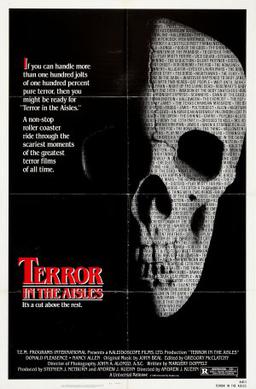
Terror in the Aisles is a 1984 American documentary film about horror films, including slasher films and crime thrillers. The film is directed by Andrew J. Kuehn, and hosted by Donald Pleasence and Nancy Allen. The original music score is composed by John Beal.

Halloween is a 1978 American independent slasher film directed, co-written, and scored by John Carpenter. Starring Donald Pleasence and Jamie Lee Curtis, with P. J. Soles and Nancy Loomis in supporting roles, the film is set mostly in the fictional town of Haddonfield, Illinois. The plot centers on a mental patient, Michael Myers, who was committed to a sanitarium for murdering his teenage sister on Halloween night when he was a child. Fifteen years later, having escaped and returned to his hometown, he stalks teenage babysitter Laurie Strode and her friends while under pursuit by his psychiatrist Dr. Samuel Loomis.
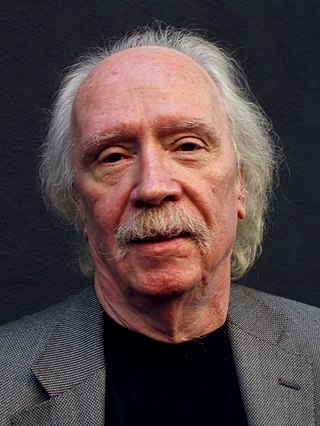
John Carpenter is an American film director, producer, writer and composer. He has contributed to many projects as either the producer, writer, director, actor, composer or a combination of the five.

